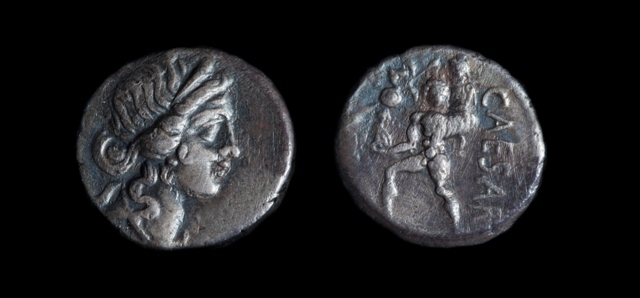Aeneas
Aeneas is a legendary escapee. Fleeing Troy upon the Greek siege of the city during the fabled battle, he eventually comes to Italy.
Here we see Aeneas carrying Anchises, his father, from the burning city of Troy. Aeneas is the son of Aphrodite/Venus, the goddess of love. Aphrodite's and Anchises' love affair is accounted in the Homeric Hymn to Aphrodite, where, fed up with Venus' preoccupation of making gods fall in love with mortals, Zeus decides to give her a taste of her own medicine by causing her to fall in love with a mortal herself, Anchises. Aeneas is the resulting hero, who was then raised by his father.
When Aeneas is pictured in art, it is usually this image of him fleeing the buring city carrying his father. He is also known to carry the Palladium while his young son follows behind him. In this coin we see him carrying both the Palladium and his father but the son is missing.
After fleeing Troy, Aeneas comes to Italy. He is another legendary founder of Rome, supposedly starting a new colony at the spot Rome now stands. Virgil's Aeneid delineates that story in epic detail.
The Romans were quite proud of their Trojan heritage; Caesar and Augustus claimed to be descendents of Venus through her son Aeneas. There are many depictions of both men accompanied by Cupid, another of Venus' sons; a clear reference to their immortal ancestry. Caesar even built a temple in his forum to the goddess Venus Genetrix, or Venus the mother.
